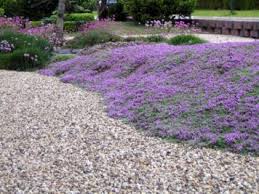Groundcovers can be a great edition to your garden and landscape, but they can also be a lot of work because they spread rapidly and can be picky about soil, water and space. Here are a few groundcovers that you can add to your gardens that look nice, but don't require much work.
 Daylilies
Daylilies are versatile, easy-care perennials that can be grown as groundcovers. They require full sun and aren't fussy about soil. These hardy plants should be divided, as needed, in fall or early spring. Feed spring and fall with a balanced fertilizer.
Tiarella
is a shade-loving perennial often used in rock gardens. It makes an
attractive groundcover but won't withstand foot traffic. Tiarella bears
racemes of fluffy blooms, and the foliage of some varieties colors
attractively in fall. The plants spread by rhizomes.
Ivy
(Hedera) has no special growing requirements except
protection from hot sun. It thrives in poor soil conditions. Because of
its tendency to take over, it must be prevented from growing into trees.
Plants should be spaced 12" apart.
Chameleon (Houttuynia cordata) is a moisture-loving perennial that grows in sun or shade
and spreads from rhizomes. The leaves resemble English ivy but are
multicolored in hues of green, pale yellow and red. Plants may spread
aggressively. 'Chameleon' grows 6" to 12" tall, and plants should be
spaced 24" apart.
Ajuga is a low-growing perennial that requires
full sun or partial shade. Blue flowers are borne on spikes in spring or
early summer, and several varieties have attractive variegated foliage.
Tyler Kaiser
T. J. Landscaping
